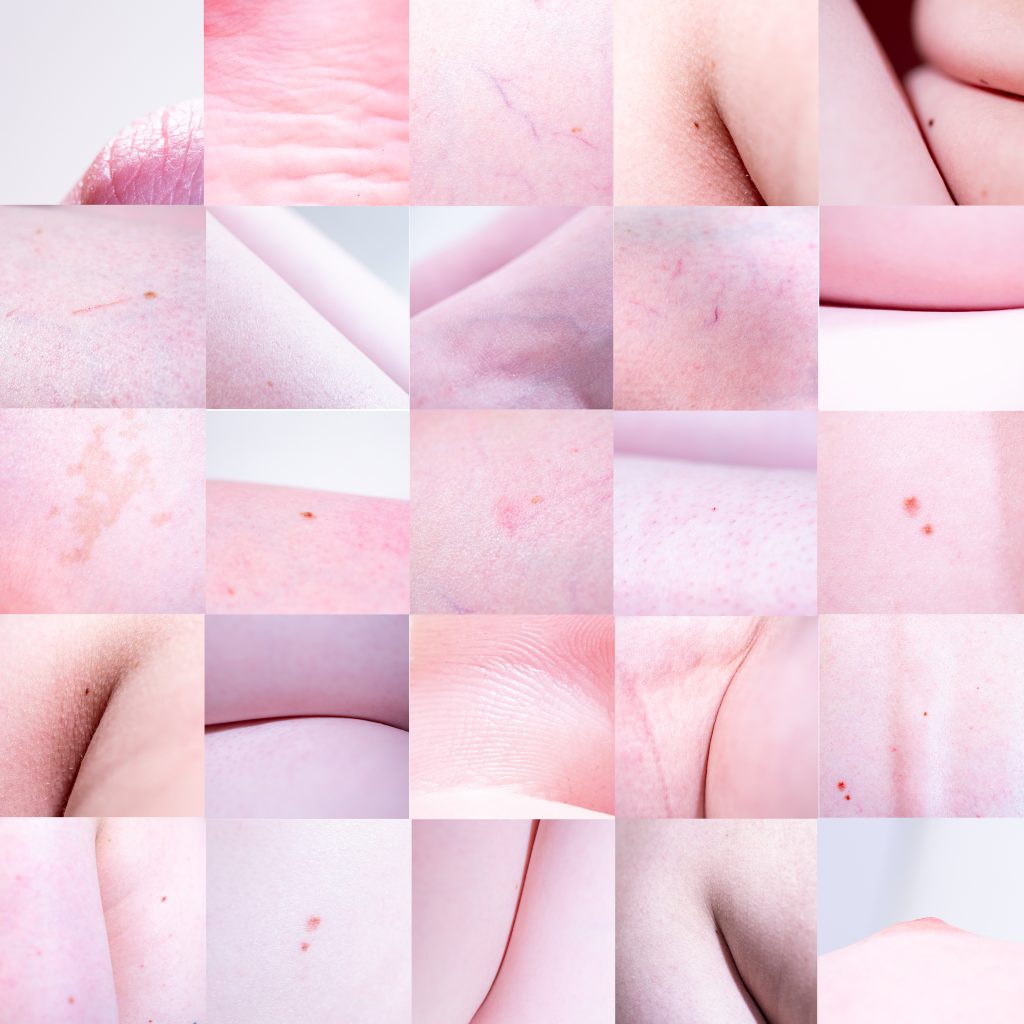Generative art has existed for a long time, and today this artistic expression has found cultural success again through the generation of NFT in the Blockchain.
In the case of The Body Maps, we chose an artistic process that comes from the past but that looks strongly to the future by mixing a first traditional photographic activity (and related post-production) with a second algorithmic and generative phase.
First, the photos come from a traditional photographic set, which is then personally post-produced by the artist who produces, for this first set of The Body Map, a number “n” of images of size 800×800 pixels that will constitute the “reservoir” from which the algorithm will draw the elements to create the final artwork.

The algorithm was written specifically for this project and is original. It is programmed to build arrays of 5×5 images and create a finite number of artwork.
In the first genesis project landed on Foundation.app called “Margherita” the run was set for 1 piece of the final size of 4000×4000 pixels. There are no rejects. The first piece will be taken. Each 1/1 map is a representation, through her skin, of the model portrayed in the project.

What makes this mixed-generative art process unique? The algorithm does not control the final quality of the Map, it tends to create a collection composed of random Body Maps in which some will be aesthetically more beautiful and others less balanced. On the other hand, it is the artist himself who with his photography and post-production work provides the algorithm with a set of initial images, all of which are of excellent quality. This cannot be considered a flaw, since we are working with automatic algorithms, in fact, even the outputs that we might call “worst” are probably important, because they are just as visible and unique.
By producing high quality initial images, the artist ensures the final quality. The artist must carefully work through the variables that affect the quality of possible outputs, and make sure that all are up to par. The Body Maps project has reached the production stage after about six months of work.
Finally, with a well-designed algorithm and a set of initial photos of excellent quality, each output will have something new, an unexpected match that makes us realize how crucial is the “random” factor we introduced.
The artist, on one hand ensure a pleasing and varied collection and on the other manage the risk that new elements may make the entire collection less coherent. The solution lies in the balance that only the artist can control. It is important to pay close attention to creating something that has strong artistic content and a consistent aesthetic, something that fully reflects the artist and is an expression of a single idea. In fact, the Body Map collection makes sense, to the point that removing any component would be detrimental.

